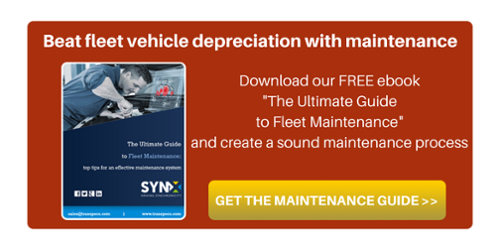
In fleet management, where costs go up and down (with some more evident than others), the continuous search for efficiency and the need to keep costs in check are a constant priority. In order to optimise costs for fleets, all cost-generating factors need to be properly assessed. And fleet vehicle depreciation, though not classed as an operating cost per se, does have an impact on the bottom line of a fleet and needs to be thoroughly examined before making purchasing or remarketing choices.
Fully understanding what depreciation is can indeed help you make the right business decisions. A simple definition of fleet vehicle depreciation is the decline in the value of fleet vehicles. In other words, whenever they are bought, they invariably become less valuable with use and the passing of time. Depreciation can also be looked at as the value of an asset over its useful life—this entails the gradual and permanent decrease in the economic value of the asset. Fleet vehicle depreciation today makes up for around 30% of the total cost of ownership.
For an average fleet, depreciation is the largest cost—most of which occurs in the first two years of a vehicle’s life. Depreciation is inevitable but not impossible to tackle: knowing depreciation better and applying good strategies won’t make it go away but will help you handle it. The general trend is to focus attention on the price of a vehicle, though fleet managers should equally consider other aspects as outlined below:
- Original fleet vehicle cost. Though not the chief cost, it is actually where vehicle depreciation starts. Nothing you can really do much about. However, if you are in a position to acquire more assets, you may apply leverage if bulk buying—the more vehicles supplied, the better chance of negotiating a lower price. Finding vehicles where a low purchase price matches a high resale value is obviously another extremely desirable option; though it might not always suit your business.
- Choose vehicles with relevant specs. When procuring vehicles, carefully determine the most suitable options for your drivers, your fleet and ultimately your company. Try to avoid vehicles with specifications that are not aligned with your fleet needs, especially ones with multiple options but low resale value. Assess the rental possibilities if you need vehicles that do not exactly match your fleet requirements.
- Apply regular and preventive fleet maintenance. Fleet maintenance is definitely a key factor when it comes to depreciation. Keeping fleet vehicles in good shape helps improve their resale value and, at the same time, maintenance costs start to increase with vehicle age, so both aspects need to be kept in mind. Keeping vehicles properly maintained via an efficient maintenance program helps to ensure that your vehicle is an appealing used product.
- Timing is money. Bringing vehicles into service at the most advantageous point will help maximize resale value and get the most out of the model-year. Buy as many vehicles early in the model-year whenever possible; bearing in mind the time of year when you need assets the most.



